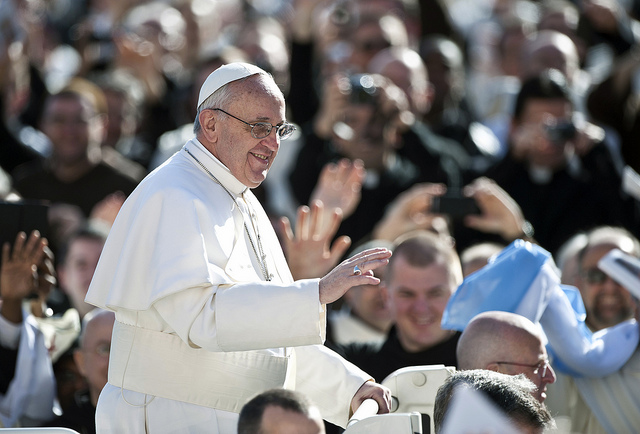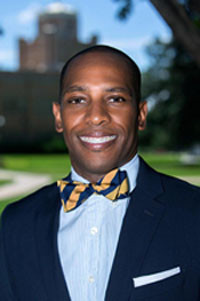In the Words of the ‘Last Rhodesian’: Dylann Roof and South Carolina’s Long Tradition of White Supremacy, Racial Rhetoric of Fear, and Vigilantism
On Wednesday, June 17, 2015, Dylann Roof, a twenty-one-year-old South Carolina native and self-identified White supremacist, entered the historic Emanuel African Methodist Episcopal (AME) Church in Charleston, South Carolina. After sitting through the Bible study with ten parishioners, Roof stood up, brandished a .45 caliber handgun, and took aim at one: eighty-seven-year-old Susie Jackson. Immediately, her nephew, Tywanza Sanders (twenty-six), intervened and tried to convince Roof to put down his gun. However, Roof replied with a rhetoric commonly used among White supremacists: “I have to do it. You rape our women, and you’re taking over our country. And you have to go.” Roof subsequently killed nine. He allegedly attempted suicide but was out of ammunition, so he fled only to be apprehended by authorities within hours in Shelby, NC (Corasaniti et al.).
As for Roof’s motive, he said he was trying to start a race war. His website’s rhetoric shows a fear of Whites becoming outnumbered, with the United States being overtaken by non-Whites. His website, The Last Rhodesian (http://lastrhodesian.com), tried to justify White supremacy. He showed photos of himself with racist symbols (see Figures 1 and 2).
Historically, Whites have had immense privilege. However, after the Civil Rights movement, the concept of Whiteness became associated (by the public) with racists. It became uncivil to deconstruct Whiteness publicly in polite society (Kennedy et al. 366). For example, those people initially downplaying the racial motives of Roof’s murders included White supremacists (such as the Council of Conservative Citizens and the Ku Klux Klan) and politicians. In essence, their rhetorical tactic was to blame Roof as a lone wolf, rather than addressing the murders at a structural level (Graham). Politicians avoided the race issue (Wing; Bailey 291–313); for example, Mike Huckabee argued that concealed-carry laws could have stopped Roof (Chasmar).
The FBI did not say Roof was a domestic terrorist, perhaps because Roof did not have official ties to supremacy groups. But his act derives from a long legacy of State-supported racial supremacy and violence, grounded on Whites’ fear of subjugation. The “why” of Roof’s crime can be better understood by looking at the past. This article links Roof’s racist rhetoric with South Carolina’s history of anti-Black rhetoric and violence to illustrate that the state’s past needs to be acknowledged as a precursor to Roof’s criminality.
Echoing Senator Ben Tillman
Roof’s rhetoric uses personal experiences and racial stereotypes. His manifesto begins with his racial awakening: the 2013 George Zimmerman verdict. His internet search for “Black on White crime” led him to the Council of Conservative Citizens website. He promotes several ideas based in racism. First, that African Americans (and non-Anglos) cause society’s problems. Second, he fears race-mixing and White extinction. Third, he urges Whites to protect the homeland. A positive example, he says, is apartheid South Africa, where Whites made up less than ten percent of the population, but controlled the Black majority for almost fifty years. His domain name, The Last Rhodesian (in reference to the former apartheid state Rhodesia, now Zimbabwe), revels in the idea of a White minority controlling a Black majority. He wore Rhodesia’s flag along with the apartheid-era South African flag (see Fig. 1). Zarefsky defined this as a rhetorical transaction—more than text, rather an entire performance (609). Posing with the flags is as significant as the sentences in the manifesto. The symbols and the words convey his appeal for a return to White dominance.

http://www.nydailynews.com/news/national/dylann-roof-wore-white-supremacist-flag-patches-jacket-article-1.2262581
Roof ends his manifesto with the following declaration, which anticipates his crime: “…no one[’s] doing anything but talking on the internet. Well someone has to have the bravery to take it to the real world, and I guess that has to be me” (Roof).
Note that Roof frames the task as a rather military operation. It is uncanny how his manifesto reasoning echoes the racial rhetoric of Benjamin “Pitchfork” Tillman, former Governor of South Carolina (1890–1894) and US Senator (1895–1918). Tillman advocated the disenfranchisement of African Americans. He had been a teen during the Civil War. After the war, he saw African Americans become citizens (with the right to vote) and become elected to office (“Reconstruction”). For example, by 1877, South Carolina had sent eight African Americans to Congress, elected two as lieutenant governors, one as justice to the state’s Supreme Court, as well as many who were elected to the state’s legislature and local offices (Boyce and Chunnu-Brayda 270–271). Because Blacks made up a majority in many areas in the South, White fear of extinction and subjugation turned into hate rhetoric and violence by paramilitary organizations such as the Ku Klux Klan, the White League, and most notably in South Carolina, the Red Shirts (Gillin 86–87; Kantrowitz 3). Such tactics were sanctioned by the Democratic Party and, ultimately, by the state when Democrats regained power.
When Tillman became a politician, his rhetoric was much like Roof’s. For example, at a political meeting, Tillman exclaimed that he would “willingly lead a mob in lynching a negro who had committed an assault upon a white woman” (Kantrowitz 169). On the floor of the US Senate, Tillman defended lynching and mob violence on Blacks in the defense of White womanhood (“Speech of Senator Benjamin R. Tillman”). Like Tillman, Roof justified his actions as being in defense of White women. To Roof, White women who engage in interracial relationships are “victims” who need to be saved, rhetoric very similar to racists before him.
Tillman defamed Black elected officials as corrupt. In one report, he alleged that “black members of the Reconstruction state legislature had indulged in expensive and needless articles, such as 40 cent spittoons, 25 cent hat pegs, $4 looking glasses, $200 crimson plush sofas, champagne, and $600 mirrors, in addition to defrauding the people with extravagant printing cost” (Dray 339–340). Tillman’s vilification is echoed in Roof’s manifesto, where Roof insists that Blacks are incapable of self-rule.
Tillman was able to attract a sizable national following (Kantrowitz 269). His brand of racism (blaming society’s ills on the “hot-headedness” of Blacks, as well as the threat of Black political empowerment) drew much interest. Like Tillman, Roof says that Blacks have a violent nature that requires Whites to subdue them in order to protect the political and social structure. Moreover, when prominent African American leader Booker T. Washington dined at the White House with President Theodore Roosevelt, an enraged Tillman stated, “The action of President Roosevelt in entertaining that nigger will necessitate our killing a thousand niggers in the South before they will learn their place again” (Kantrowitz 259). Here Tillman is invoking the rhetoric of a race war due to the hint of Black progress.
Tillman’s ascension into national politics and warm reception by Whites was timely. By that point, White supremacists had successfully distorted the legacy of the Confederacy and the Reconstruction era. They even built Confederate monuments (which Roof visited prior to the Charleston shootings) throughout the nation to illustrate that the Confederacy was somehow patriotic (Lowen 89). So as the State began to back the suppression of Blacks, Tillman became “the” spokesperson of White Supremacy and the Confederate’s Lost Cause. Roof’s actions are a testament to the lasting effects of Tillman’s rhetoric.
Murder, Violence, and Mayhem: The Hamburg Massacre of 1876
Racial injustice and White terrorism are part of the history of many states (not just in the South) and often involve vigilantes killing Blacks for alleged rape or murder of Whites. Such actions are much like the killings by Roof, in which extreme retribution is deemed necessary by Whites to uphold the US social fabric.
Under the rhetoric of “good government,” which became coded language for White supremacy, this extreme retribution is related to the right to bear arms (Emberton 194). America’s forefathers in 1776 fought England to gain independence, and White paramilitary groups during the Reconstruction era linked their struggle to that of their forefathers. They wanted to topple the Radical Republicans and their Black allies, and in doing so they justified themselves as merely protecting rights for Whites. One of those rights was that it was only White men who had the right to bear arms (Emberton 194–195). Whether Roof clearly understood it or not, his ability to (a) purchase a gun with a pending felony, then to (b) pose with a gun with a Confederate flag, symbolically represents this legacy of false patriotism, White masculinity, and State-sanctioned terrorism (see Figure 2).

One example of this legacy in South Carolina is the Hamburg Massacre of 1876.
As historian Carole Emberton (197) notes, the tragedy “galvanized the white supremacist movement in its effort to control the Democratic Party” (and in effect South Carolina politics). Hamburg (near Augusta, Georgia) had about five hundred predominately Black residents. Blacks elected an official who governed the town, and they had their own militia. That militia was drilling on July 4, when two White men in a carriage wanted to pass through. At first the Whites were told to go around, but then they were let through (Dray 234–235). The White men told a judge what had happened, which led to a hearing attended by White vigilantes (including Benjamin Tillman). The militia refused to disarm, which ultimately led to a massacre in Hamburg by Whites of the militia and other Blacks, being outnumbered. This emboldened the state’s Democratic Party to topple Reconstruction (Dray 236–244). To the Whites, the Black militia represented Black social equality. It must have seemed to them that Black militiamen were “taking over their country.” Thus, the Whites found a way to disarm the Black militia. The same feeling is echoed in Roof’s claustrophobic statements in his manifesto as well as at the murders, when he says that Black people are taking over the country. In his manifesto, he chides the skinheads and Ku Klux Klan for their inaction. He nominates himself to take on the charge (Roof).
Conclusion
The nation’s contemporary politics are linked inexorably with the political rhetoric of the past and the nation’s history. To make sense of Roof’s motives, we have to acknowledge history. While politicians use “lone wolf” rhetoric to sidestep the reasons for this murder, the country slips further from confronting the problem of racism today. What the nation needs is honest conversation about structural racism and those who promote White supremacy. Zarefsky has noted that presidential rhetoric could assist in shaping the public’s understanding of an issue/situation/crisis (613). After this horrific event, politicians could have created a rhetorical space that made a discussion about gun laws and racial equality possible. They squandered that moment.
In time, the narrative shifted from Roof to the Confederate flag in front of South Carolina’s statehouse. The public’s gaze went from Roof (as an individual who is White) to the flag (a symbol of Whiteness). No matter that the flag was subsequently removed there and elsewhere; the flag still haunts Black people, representing perpetuated oppression, violence, hate, racism, and White supremacy. History shows a visceral divide between Black people and the State—a political and geopolitical divide. The rhetoric from the State is that Black people should fear The State. A Black president alone is not enough to combat racism.
Can rhetoric teach us to “read” White supremacy? By that we mean, can it teach us why Roof murdered nine people, or why such a tragedy might happen again? Understanding the rhetoric is crucial because racism is one of this nation’s most compelling problems. In reflecting on the rhetoric of racism, McPhail states, “I am forced to ask if any language is capable of overcoming the defense mechanism of denial, silence, and innocence that circumscribe and sustain the social and psychological privileges of Whiteness” (45). If this is true, the privilege of Whiteness will prevent us from having this conversation now. In the end, Roof’s murder spree was a byproduct of a legacy of State-supported racial supremacy and violence grounded on Whites’ fear of extinction and subjugation.
Works Cited
- Bailey, Fred. “M.E. Bradford, the Reagan Right, and the Resurgence of Confederate Nationalism.” Painting Dixie Red: When, Where, Why and How the South Became Republican. Ed. Glenn Feldman. Gainesville: UP of Florida, 2011. 291–313. Print.
- Boyce, Travis and Winsome Chunnu-Brayda. “ ‘I Shall Not Be Muffled Here’: Thomas E. Miller, the Lost African American Congressman, 1890–1891.” Before Obama: A Reappraisal of Black Reconstruction Era Politicians. Ed. Matthew Lynch. Santa Barbara: Praeger, 2012. 265–284. Print.
- Chasmar, Jessica. “Mike Huckabee: Concealed Carry ‘Could Have Stopped’ Charleston Gunman.” The Washington Times. The Washington Times, 19 June 2015. Web. 16 August 2015.
- Corasaniti, Nick, Richard Perez-Pena, and Lizette Alvarez. “Church Massacre Suspect Held as Charleston Grieves.” The New York Times. The New York Times, 18 June 2015. Web. 30 June 2015.
- Dray, Philip. Capitol Men: The Epic Story of Reconstruction through the Lives of the First Black Congressmen. Boston: Houghton Mifflin, 2008. Print.
- Emberton, Carole. Beyond Redemption: Race, Violence, and the American South after the Civil War. Chicago: U of Chicago P, 2013. Print.
- Gillin, Kate. Shrill Hurrahs: Women, Gender, and Racial Violence in South Carolina, 1865–1900. Columbia: U of South Carolina P, 2013. Print.
- Graham, David. “The White-Supremacist Group that Inspired a Racist Manifesto.” The Atlantic. The Atlantic Monthly Group, 22 June 2015. Web. 29 June 2015.
- Kantrowitz, Stephen. Ben Tillman and the Reconstruction of White Supremacy. Chapel Hill: U of North Carolina P, 2000. Print.
- Kennedy, Tammie M., Joyce Irene Middleton, and Krista Radcliffe. “The Matter of Whiteness: Or, Why Whiteness Studies Is Important to Rhetoric and Composition.” Rhetoric Review 20.4 (2005): 359–373. Print.
- Lowen, James W. Lies Across America: What Our Historic Sites Get Wrong. New York: Simon & Schuster, 1999. Print.
- McPhail, Mark Lawrence. “Revisiting the Rhetoric of Racism.” Rhetoric Review 20.1/2 (2001): 43-46. Print.
- “Reconstruction: The Second Civil War.” Directors Elizabeth Deane and Llewellyn Smith. PBS Home Video, 2004. DVD.
- Roof, Dylann. The Last Rhodesian. n.d. Web. 27 June 2015.
- “Speech of Senator Benjamin R. Tillman, March 23, 1900.” Congressional Record, 56th Congress, 1st Session, 3223–3224.
- Wing, Nick. “These Republicans Aren’t Sure What Motivated a White Guy to Kill 9 Black Churchgoers, But It Wasn’t Racism.” The Huffington Post. The Huffington Post, 18 June 2015. Web. 28 June 2015.
- Zarefsky, David. “Presidential Rhetoric and the Power of Definition.” Presidential Studies Quarterly 34.3 (2004): 607–619. Print.
Cover Image Credit: Frost, A. B. “In Self-Defense.” Harper’s Weekly. October 28, 1876. 880.




 Travis D. Boyce is an Associate Professor of Africana Studies at the University of Northern Colorado. He holds a PhD in Cultural Studies from Ohio University. His research interests include African American university presidents during the mid 20th century, the U.S. during Reconstruction, contemporary U.S. History, as well as film, popular culture and sports studies. He has articles and book reviews published in various peer viewed journals and chapters published in edited books. He recently completed a co-edited book project titled Historicizing Fear that is in contract with University Press of Colorado and currently working on his second book on the life of Benner C. Turner, former president of South Carolina State University 1950-67.
Travis D. Boyce is an Associate Professor of Africana Studies at the University of Northern Colorado. He holds a PhD in Cultural Studies from Ohio University. His research interests include African American university presidents during the mid 20th century, the U.S. during Reconstruction, contemporary U.S. History, as well as film, popular culture and sports studies. He has articles and book reviews published in various peer viewed journals and chapters published in edited books. He recently completed a co-edited book project titled Historicizing Fear that is in contract with University Press of Colorado and currently working on his second book on the life of Benner C. Turner, former president of South Carolina State University 1950-67.  Winsome Chunnu Brayda is the Strategic Director for Diversity and Inclusion and Multicultural Programs and Initiatives at Ohio University. She holds a PhD in Cultural Studies from Ohio University. Her research interest includes popular culture, policy studies, race and inequality. She has various articles and reviews in peer-reviewed journals as well as chapters in edited collections. She recently completed a co-edited book project titled Historicizing Fear that is in contract with University Press of Colorado and is currently working on her second book on the education policy implementation in Jamaica.
Winsome Chunnu Brayda is the Strategic Director for Diversity and Inclusion and Multicultural Programs and Initiatives at Ohio University. She holds a PhD in Cultural Studies from Ohio University. Her research interest includes popular culture, policy studies, race and inequality. She has various articles and reviews in peer-reviewed journals as well as chapters in edited collections. She recently completed a co-edited book project titled Historicizing Fear that is in contract with University Press of Colorado and is currently working on her second book on the education policy implementation in Jamaica.